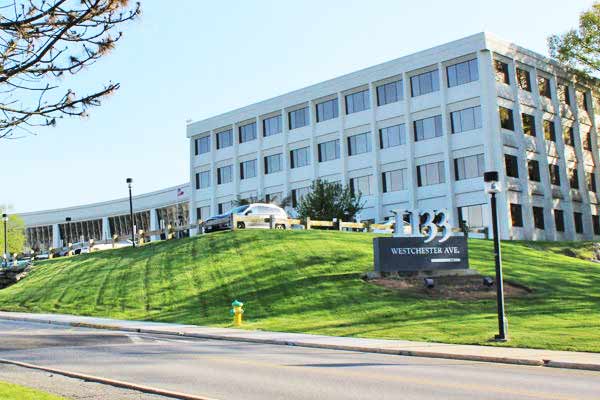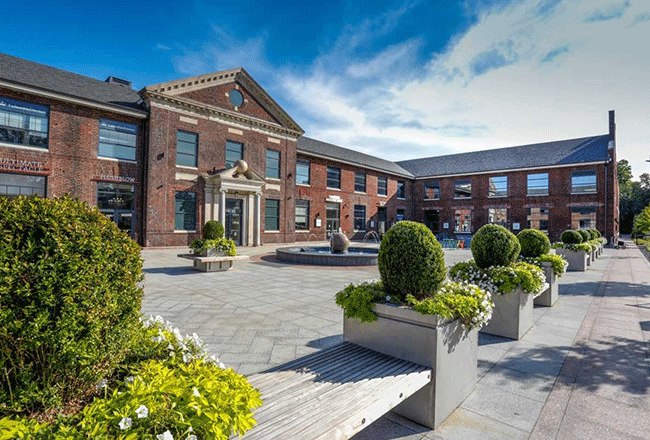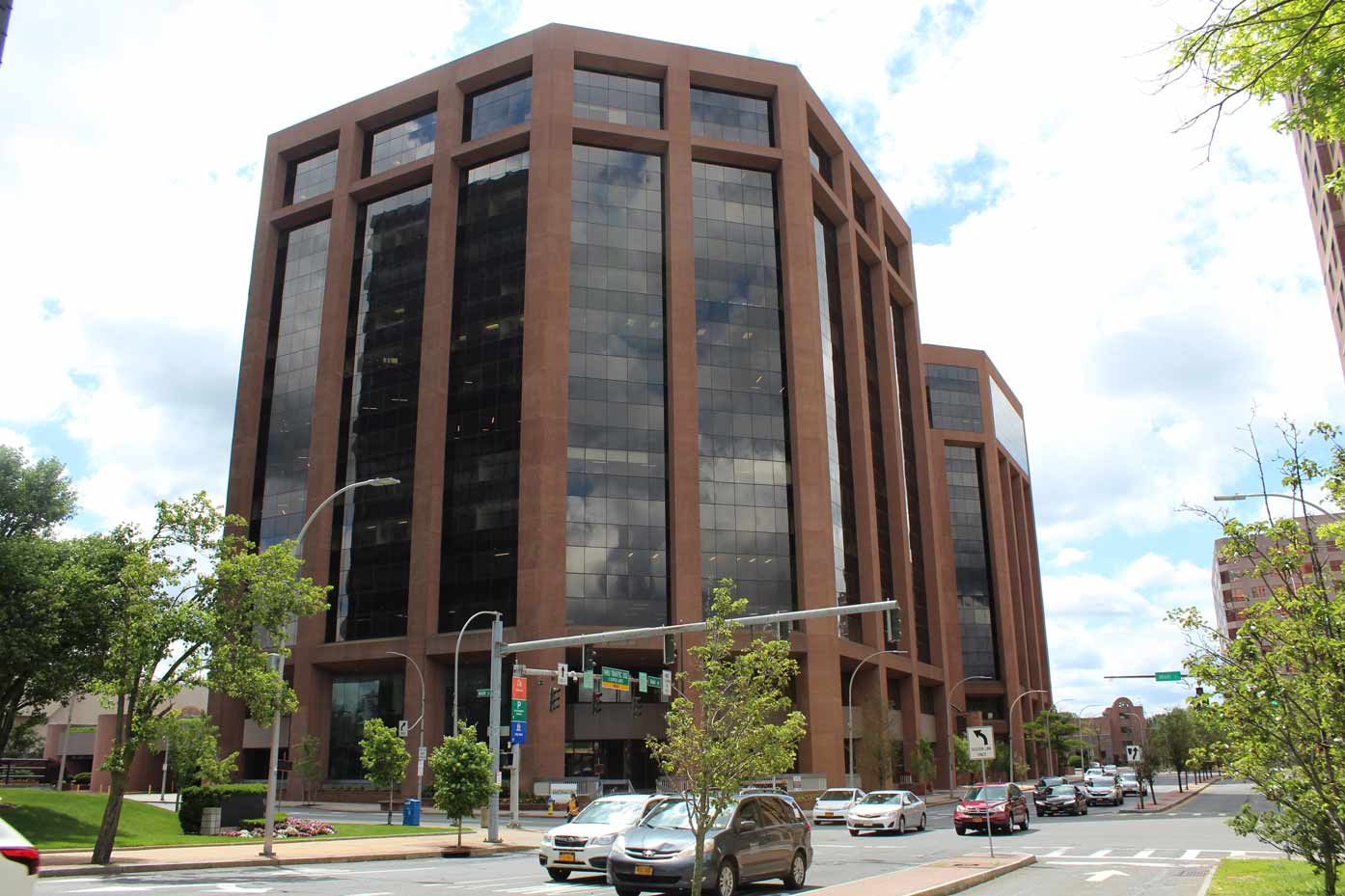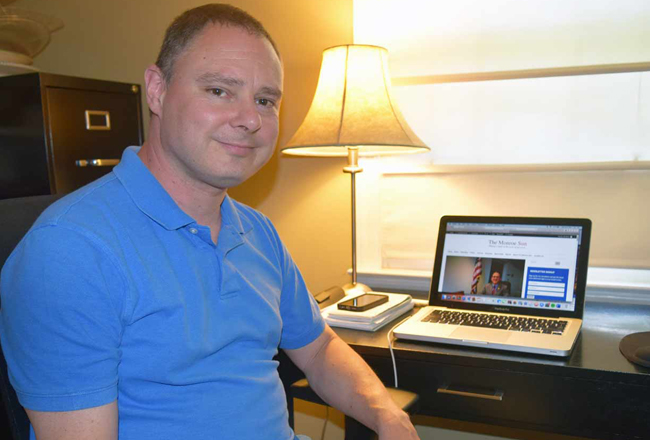
From a multitenant office market of more than 33 million square feet about 12 years ago, we have demolished and/or repurposed almost 6 million square feet of multitenant office space, and have not built any new office buildings at all. Many functionally obsolete buildings have been demolished to free up the sites for new residential, medical and retail development. These were primarily the first buildings built in the early 1970s, which were well past their useful lives.
Some of the former corporate headquarters buildings have been purchased by other companies for their own use. Others have new owners, such as Robert Weisz”™s RPW Group, which have repurposed them into multitenant buildings. Weisz believed that the amenity-rich environment built by the large corporations for their employees (including IBM and Altria) would be very attractive to small and midsize businesses, and his theory proved correct in his successful adaptive retenanting of large buildings, including 800 and 1133 Westchester Ave.
Suburban office parks in Westchester are not what they used to be. The originals contained office buildings only. Today, those parks contain office buildings, multifamily residential, retail, medical, hotels and stand-alone fitness centers. Our suburban office parks are morphing into “live/work/play” environments.
In the last 10 years or so, much of this space has been repurposed for medical uses, with many office buildings converted fully or partially for use by large medical groups and hospitals. Hospitals and large medical groups began to branch out to bring their services closer to their patients and to make them more convenient and economical than going to a large hospital. Medical users are now competing with Verizon and CVS for the best and most prominently located retail locations. They want signage, convenient parking and adjacent amenities for their patients for their satellite facilities.
The latest example of this is Simone Development”™s Boyce Thompson Center in Yonkers. The site contained a large historic building that had been empty and decaying for nearly 40 years. Simone redeveloped the shell for tenants, including anchor medical tenants, restaurants, a Starbucks, pharmacy, liquor store, eyeglass store, hair salon and other tenants. All of them benefit from the tremendous pedestrian traffic that flows through the center on a daily basis. A great mix of tenants resulting in a great real estate success story.

A SLOW FIRST QUARTER
The first quarter of the year was relatively slow, with only about 30,000 square feet of net absorption. Total leasing activity was about 440,000 square feet, about on par with the first quarter of last year
The second quarter was much more active, and we are at about 900,000 square feet of leasing through the first half of the year. This is an increase of 18.6% from midyear 2018. Renewal activity is up 29.6%, representing approximately 420,000 square feet. The county”™s overall availability rate ended the first half at 20.8%, down from 21.4% in the prior year.
In previous years (and softer markets) tenants would often relocate to lower-priced space rather than renew. Today, rental rates are up marketwide. The biggest opportunity for tenants to save significant dollars on their occupancy is to move from the White Plains Central Business District to a suburban office building. Taking rental rates in the CBD are approaching the $40 mark (plus the cost of electric and parking) and suburban rates are still in the mid-to-high $20s (plus electric, but with no charge for parking).
There has been movement in both directions (into and out of the CBD) over the past few years. Some tenants want to save money and have few clients come to their offices, so there is less need for them to be in an expensive downtown tower building near the train station. Other tenants are trying to attract millennial employees and want to be near the train, restaurants, bars and services, which are more attractive for this demographic.
While it was not a banner first half in the White Plains CBD (with a little under 29,000 square feet of positive absorption) market activity is strong. There is booming residential development and a large pipeline of deals in progress in this submarket that will very likely turn around these statistics in the second half of the year.
The Western submarket has come roaring back in the second quarter of 2019. It had negative absorption in 2018, but leasing activity has increased more than 42% this year, outperforming all other submarkets in terms of occupancy. Montefiore”™s recent lease at 555 Taxter led the quarter in this submarket.
With about 21% availability in the West vs. 13.9% in the East, there may be some migration from East to West for tenants to find the space they need at a price they are willing to pay. In the last few years, the Western submarket has lagged the Eastern submarket in pricing, but the new supply-and-demand dynamic here is helping to push rents up.
”˜RENT IS A FUNCTION OF THE MARKET”™
The number of mid- to- large-size quality spaces is shrinking. New owners are making investments in their buildings and leasing them up fairly rapidly.
The most brilliant real estate words I have ever heard are “rent is a function of the market.” Real estate is a supply-and-demand business, and the only thing that moves rents in either direction is the balance between the two. Even if Westchester”™s demand is not increasing dramatically, a constrained supply of quality space is making our market more competitive and causing rents to rise.
Office rents are rising throughout the Westchester market. More modestly in the suburbs than in the White Plains CBD, but the rent numbers are higher, annual rent escalations are higher, lease terms are longer and free rent periods shorter.
I have obtained my market and leasing statistics from Karolina Alexandre, research manager of Newmark Knight Frank. She says, “We are in a very unusual market in 2019. Our statistics have improved, but there is still a large pipeline of deals that have not yet closed that could make this a banner year. Our office inventory continues to shrink. The Westchester CRE market is healthy, probably healthier than it has been in decades. If the STEM school lease for the former IBM campus in Somers closes this year, an additional 1.2 million square feet will come offline and countywide availability will drop significantly.”
COSTS ARE RISING FOR LANDLORDS
Due, in part, to the boom in multifamily development in Westchester and throughout the U.S., construction costs for tenant fitouts have risen significantly, both for labor and materials. This is becoming a larger part of the deal equation and adding additional justification for rising rents.
Tenants today expect higher-quality buildouts than ever before, with more glass walls, higher-quality finishes and high-end kitchens. And just because spaces are more open, with fewer offices, does not mean that they are less expensive to build.
Tenants are realizing that offices with large amounts of cubicles also require large numbers of huddle rooms, quiet rooms, meeting rooms, etc. Building spaces with today”™s fashionable open ceilings is more expensive than with traditional dropped ceilings, as all HVAC ductwork, sprinkler lines and other elements are exposed. This requires them to be constructed in a more aesthetically pleasing manner and with higher-quality materials. And these open plan spaces often require sound masking, to keep all of the voices and other sounds from bouncing off all of the hard materials and making it impossible to converse in person or on the phone.

BIG CONVERSION IN THE WHITE PLAINS CBD
Ginsburg Development”™s City Square is taking a big chunk of office space out of the White Plains CBD market and converting it to residential. The city of White Plains approved 203,438 square feet of office space to be converted to 188 luxury apartments at 1-11 Martine Ave. There are very few office buildings that lend themselves to conversion to apartments, but the City Square building is one of them. Ginsburg is taking advantage of the hot apartment market here, located within a quick walk to the White Plains Metro-North station. This conversion is very significant and tightens up the CBD submarket a lot. Rental rates have been rising significantly in the CBD for the past four years or so and this conversion will add fuel to that fire.
MORE COWORKING COMES TO WESTCHESTER
Unlike the traditional shared office facility, coworking is set up a lot more informally and caters primarily to millennials and their work styles. Serendipity Labs recently opened a new 20,000-square-foot coworking space at 44 S. Broadway in White Plains.
It is exactly what you would expect, with large open kitchens, glass office walls, concrete floors and lots of team rooms that can be configured in various ways for groups of people. This is the second coworking space in the White Plains CBD, after KOI Creative Space, which pioneered this work style in Westchester. It is much larger and obviously is looking to attract either small companies or departments of large companies that want to be in this type of environment. It is radically different than the more conventional shared office providers such as Carr Workplaces, Regus and Stark Office Suites, which cater primarily to those who want traditionally furnished individual offices. It will be very interesting to watch Serendipity”™s leaseup and to track what types of tenants will be attracted to this environment.
IBM SOMERS DEAL MOVING FORWARD
The 1.2 million-square-foot IBM Somers STEM School project seems to be moving forward. The environmental analysis has been done and a meeting of all of the town boards is scheduled for Aug. 8 to review it. Other private schools have gobbled up large blocks of space in the past, including the former IBM campus in Valhalla and the former Fordham University Marymount campus in Tarrytown, but this is on a much bigger scale.
If the Somers deal is approved and closes, our countywide availability will plunge from 20.8% to about 14%. However, this is not as significant as it sounds and its effects on rents will actually be negligible, if any at all. The reason is simple: The former IBM Somers campus is too large and too far north to attract tenants. Even a 100,000-square-foot tenant would only represent 8% of this campus and might not even be large enough to open it up and operate it. Tenants of that size, or any size, typically want to be much further south in the county. The northern submarket has suffered from the highest availability statistics in the county since PepsiCo Bottling Group relocated to White Plains and IBM closed its Somers campus. At 36.5% Class A availability, with only 16,000 square feet of net absorption in the first quarter, this sector is artificially dragging down the county”™s numbers.
MEDICAL MARCHES ON
Medical continues to gobble up large blocks of space. Montefiore had already subleased a full floor of administrative space at 555 Taxter Road in Elmsford and recently signed a direct lease for about 43,000 square feet at that building. The hospital group will occupy more than half the building for both medical and administrative space.
The eastern submarket is already populated with many large medical users, including WestMed (two full buildings), Scarsdale Medical Group, Hospital for Special Surgery and Sloan Kettering Cancer Center, as well as other medical tenants in office buildings and in the Health Care Trust of America campus just outside of White Plains. The new Montefiore Pediatric Medical Center on Corporate Park Drive will add another 100,000 square feet of medical space to this submarket, which has the highest concentration of medical tenants in Westchester.
A BLOCKBUSTER SALE
The blockbuster investment sale of the year was Robert Martin Co.”™s reacquisition of the South Westchester Executive Park in Yonkers, Cross Westchester Executive Park in Elmsford and Mid-Westchester Executive Park in Hawthorne from Mack-Cali Realty Corp. Robert Martin invented the flex product (office/warehouse and office/light assembly space combinations) in the 1970s and cornered the market on this product type in Westchester.
In the last few years, previous owner Mack-Cali (in preparation for its disposition of these assets) has pushed the rents higher and higher on this sought-after product. That set the tone for the high price per square foot it achieved on the sale.
This $487 million purchase of more than 3.2 million square feet of flex, warehouse and office space puts these key parks back in local, private hands for the first time since the Mack-Cali acquisition of the Robert Martin Company buildings in 1997.
INDUSTRIAL IS HOT AND GETTING HOTTER
This sale to Robert Martin comes on the heels of an earlier sale by Mack-Cali of the 364,000-square-foot Elmsford Distribution Center to Realtime Logistics for more than $70 million. These sales were done at $152 per square foot to Robert Martin and $193 per square foot to Realtime. These prices, much higher than most office buildings are selling for, portend even higher rents for our relatively small inventory of industrial and warehouse space in the future.
Industrial space continues to be a hot product. But with very little inventory, we do not see many large deals. Prices continue to escalate and it is very difficult to find quality space at any price.
The exception is a deal signed earlier this year by UPS for the entire 435,000-square-foot building on Tuckahoe Road in Yonkers that was formerly occupied by POP Displays. POP, which manufactures retail display units, is relocating its manufacturing down South, and leased 26,000 square feet at George Comfort & Sons”™ Kingsbrook Office Park in Rye Brook for its headquarters. This was certainly the only building of its size in lower Westchester that could have fit UPS”™ needs, so it was a great find.
Our industrial market is also feeling the effects of tenants from the Bronx, who are being pushed north into Westchester by significant redevelopment in their borough.
There continues to be a reduction in older inventory in Mount Vernon and Yonkers, which is being demolished as part of site assemblages for large multifamily developments. This is a one-two punch for commercial tenants needing this type of space, and is helping to contribute to the rent increases for this type of product.
LET”™S NOT FORGET BIOTECH
It was recently announced that New York Medical College (NYMC) will double the size of its startup incubator.
BioMed Realty Trust is reportedly in the process of building out approximately 25,000 square feet of new laboratory space at its Ardsley Park facility. This will be leased for flexible terms in 5,000- to 10,000-square-foot segments to companies that have grown out of the incubator phase and are ready for their own space. This park is also marketing an additional 75,000 square feet or so of laboratory space. So we do have some inventory in this important product type.
The ground lease for North 60 was signed in January and developer Fareri Associates is working on its environmental studies and plans to submit to the town of Mount Pleasant for its rezoning and other required approvals. The hope is that it will be able to commence building out the infrastructure for the site late in 2020. This is a $1.2 billion project for a biotech, technology and lifestyle campus.
According to Joanne Gere, executive director of the Westchester Biotech Project, there are at least 100 biotech companies in incubators in New York City and Westchester, many of whose owners live in Westchester. These are great prospects for the NYMC incubator, for Ardsley Park and for North 60.
This industry provides high-paying jobs for an educated workforce, so it is a particularly desirable employment sector that Westchester wants to attract. With Regeneron as the anchor, Westchester is also a place that biotech tenants want to be. But laboratory space is scarce and very expensive to build, so it is good to see that these tenants will have the type of facilities that will attract them to the county now and in the future.
HEALTH OF THE MARKET
The Westchester commercial real estate market is healthier than it has been for decades. Through demolition of obsolete buildings, repurposing of other buildings and a huge increase in space absorbed by medical users, the office market is tightening toward a landlord”™s market. It has been strongly a landlord”™s market in flex and industrial space for the last few years.
Rents are rising, as they do in a healthy market with shrinking inventory. A number of my clients are expanding. My broker colleagues and I are busy with new and renewal transactions and there are instances where more than one tenant is negotiating on a particular space. It is clear that our market is finally turning the corner to a new reality.
Howard E. Greenberg is the president of Valhalla-based Howard Properties Ltd. He has represented commercial tenants in Westchester and throughout the U.S. for more than three decades. He can be reached at 914-997-0300 or howard@howprop.com.





















